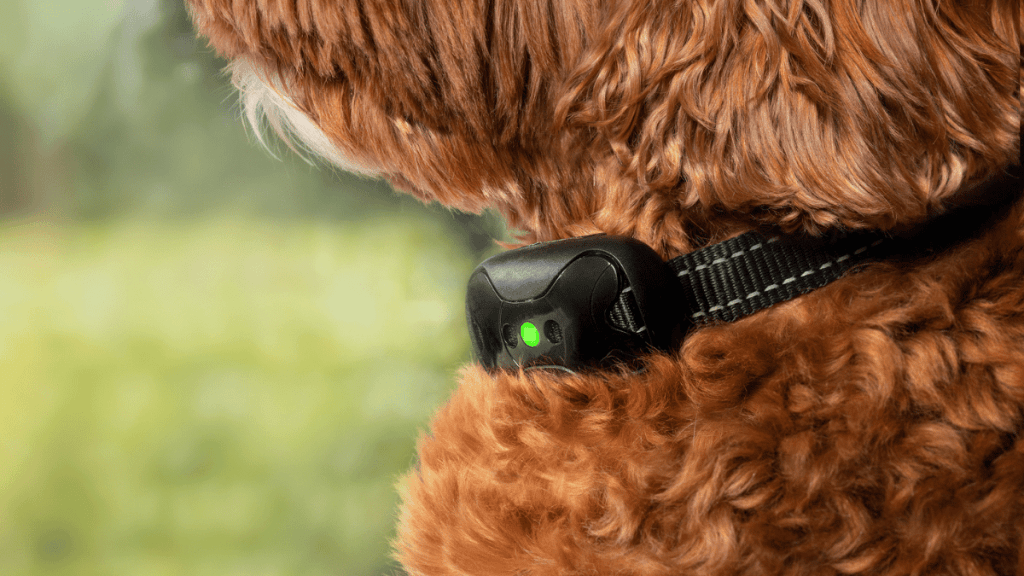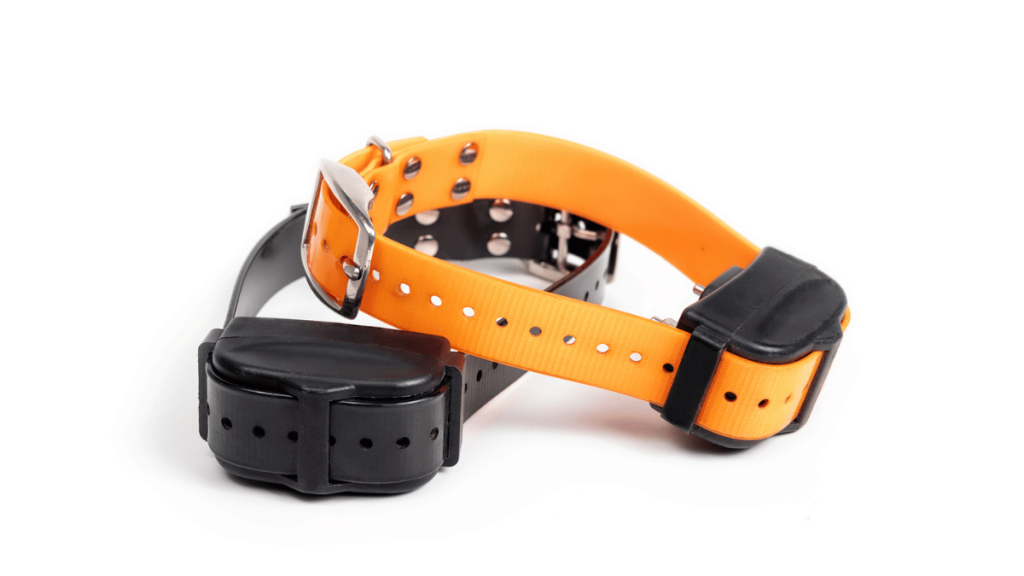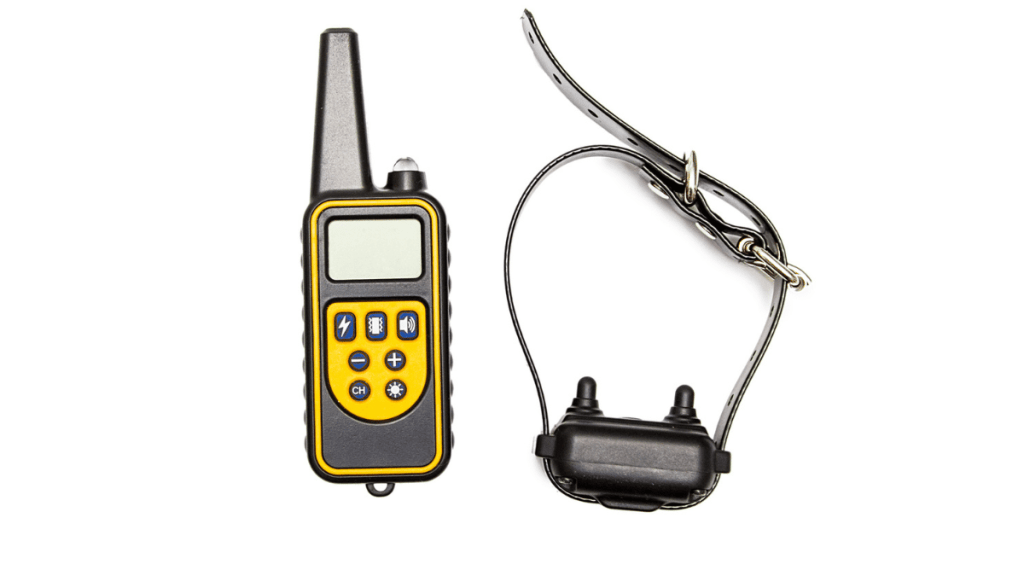Bark collars are a popular choice among pet owners, used to address excessive barking in their canine friends — they are anti-barking devices that help train dogs and improve their behavior. However, picking out the right type and understanding how they work is very important to ensure that you’re using these tools effectively and in a humane manner. In this article, we’ll go over the types of bark collars, getting a better understanding of their mechanisms and how they can help with behavior training.
If you’ve been wondering, “How to stop a dog from barking?” or “Are dog collars cruel?”, we’ll be answering those questions. From an anti-bark collar to more advanced models, we’re considering the different options available to take care of barking issues. Plus, we’ll weigh the pros and cons so that you can make an informed decision.
How Do Bark Collars Work?
Bark collars are devices that are designed to reduce or stop excessive barking in dogs by delivering a mild stimulus when they bark. Generally, they detect sound or vibration that’s caused by barking and this triggers reactions like static shocks, vibrations, or a burst of citronella spray, the aim being to interrupt barking in a harmless yet unmissable way. This way, the dog will learn to associate barking with an unpleasant consequence, eventually knowing to not bark unnecessarily. Pet parents can adjust the levels of sensitivity in these collars, tailoring the stimulus for different dog sizes and temperaments.
When you’re looking for the best anti-barking device, we suggest that you consider the types of stimulus and which one will be most effective for your pet. Some dogs may respond well to vibrations or sprays, while others may require static stimulation. No matter what, your top priority should be to choose a bark collar that won’t cause your fur baby any distress — their safety is your number one priority. However, you don’t have to worry since the majority of modern bark collars are designed to be safe and humane — nonetheless, doing some research won’t hurt.
Types of Bark Collars: Understanding the Different Mechanisms

There are different types of bark collars available in the market, each designed to meet different needs and cater to varied sizes. Below is a breakdown of the most common mechanisms:
Static Electric Bark Collars (Shock Collars)
This is the most common type of bark collar and it works by delivering a mild static shock when the dog barks. You can adjust the intensity of the shock according to your dog’s size and how sensitive they are. A bark collar for small dogs usually has a lower level of simulation when compared to those designed for larger dogs, ensuring their comfort and safety.
Vibration Bark Collars
Instead of using a shock collar, you can opt for a vibration collar (we suggest this) — it delivers mild vibrations when your dog barks, making it a great alternative for sensitive dogs and canines who don’t respond well to static shock. They can be used on both large and small dogs, and you can adjust the settings based on your pet.
Citronella Spray Bark Collars
These collars release a burst of spray near the dog’s face when they bark. Since most canines find the scent of citronella to be unpleasant, this can help deter them from unwanted barking. They are also a very humane way to train dogs and you can adjust the intensity — this makes it a great bark collar for large dogs too.
Ultrasonic Bark Collars
This is an ultrasonic dog bark deterrent that emits a high-pitched sound when your dog barks — it’s unpleasant to dogs but can’t be heard by humans. The sound will get your dog to stop barking, helping train them over time. Similar to the previous bark collars that we discussed, you can also adjust the settings here.
Remote-controlled Bark Collars
Using a remote, you will be able to control the level of correction that this bark collar delivers. They are ideal for pet parents who want to be more involved with their dogs during the training process, offering control over when and how their four-legged friend receives correction. This makes it the best dog collar for stubborn dogs — eventually, with your input, they will learn not to bark unnecessarily.
The Role of Bark Collars in Behavior Training

Bark collars play a major role in behavioral training for canines. Below, we’ve listed what you can expect when your pooch starts using an anti-bark collar:
Changes in Behaviour
When you use one of the best training bark collars, you will notice that your dog will stop barking excessively. Your pet will also eventually learn to associate barking with an unpleasant sensation, making them quieter over time.
Consistency in Training
With a bark collar, your fur baby receives consistent feedback whenever they bark, and this speeds up the learning process. Consistency plays a major role in reinforcing positive behavior and discouraging the negative.
Promotes Self-control
By discouraging barking, these anti-barking devices help dogs to have more self-control. As time goes by, they will gain an understanding of when it’s okay for them to bark and when they should remain calm — remember, excessive barking isn’t good for them either.
Improves Focus
Bark collars prevent your pet from being distracted — something which happens when they’re excessively barking — overall, helping improve their focus. As a result of this, they become more attentive to commands and are able to better engage in training sessions.
Training Becomes Convenient
Since a bark collar is a hands-free training tool, owners are still able to correct their dogs’ behavior even when they aren’t around. This makes it very convenient for busy parents who still want to see results.
Pros and Cons of Using Bark Collars for Dogs

Although bark collars are a popular training tool to control excessive barking in dogs, they come with both advantages and disadvantages. Below we’ve listed the main pros and cons of using a bark collar.
Pros
- Since bark collars are specifically designed to help address barking issues, they act as a straightforward solution. They offer immediate feedback when your canine barks, helping to quickly discourage them from unwanted behavior.
- There are different types of bark collars, as we discussed above, so you can choose one that best suits your dog’s size, preferences, and temperament.
- Some dog owners may not be able to be around their dog all of the time and bark collars act as a hands-off solution. They can still control their dog’s barking without the need for constant intervention.
- Most modern bark collars come with adjustable settings, ensuring that the stimulus that your pet receives is appropriate for their size and sensitivity levels. Vibration and sound collars are also available and are a much more gentle option. This makes them safe and humane when used correctly.
Cons
- If you do not use a bark collar correctly, it is very likely that it can make your dog confused and anxious. It is important that you first understand how to use it so that you can avoid negative associations with a bark collar.
- We saw that bark collars are an effective way to stop a dog from barking, however, it won’t necessarily address the underlying reasons for the excessive barking. If your pet barks because they are anxious, bored, or dealing with other behavioral issues, then bark collars will only be a short-term solution.
- Some collars may become overly sensitive to the stimuli from certain types of bark collars, especially shock collars. That’s why we suggest that you opt for vibration or ultrasonic collars instead. Shock collars may cause unnecessary stress and fear for your dog, which can cause them distress, and even make their behavioral issues worse.
- All dogs are not going to respond in the same way to a bark collar, while some dogs may become desensitized to the collar’s stimulus as time goes by. In this case, you might have to change the type of dog collar, or even look for an entirely different training approach.










